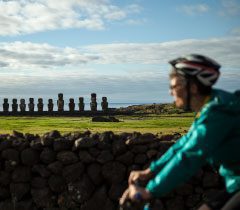El Chaltén
Patagonia, Argentina
The Areas we explore
Our explorations provide travelers with an in depth experience of this austral territory, allowing them to become immersed in its unique characteristics and go deeper into what makes Patagonia unique. In order to do so, we have outlined four different exploration zones, each with its own set of unique geographic, cultural and biosphere characteristics. We recommend you begin exploring the Reserva Los Huemules zone –where our lodge is located– continuing with explorations in either the Desert Lake zone, the Parque Nacional Los Glaciares, or the Southern Ice Fields zone.
Los Huemules Conservation Reserve
The future of conservation depends on shifting our role in the world: from mere observers to custodians – active protectors of the places we explore and are
part of who we are. It is rare to find a place on Earth in which so much is packed into such a relatively compact area. The Los Huemules Conservation Reserve, where the Explora lodge in El Chalten is located, encloses features that cannot be easily found elsewhere in Patagonia. This allows travelers to set off on exploration routes from the very doorstep of our lodge, thus minimizing transport and road time. The ecosystems it hosts are as varied as the climates it can witness. A place for introverts, its privacy means you can walk for days without ever seeing another person, walking side by side with nature itself.
Parque Nacional Los Glaciares
The Los Glaciares National Park is an area of exceptional natural beauty, with rugged, towering mountains and numerous glacial lakes scattered within its borders. This area allows travelers to explore a part of the park, encountering the many ecosystems it hosts within. Home to fauna from the sub-Antarctic steppe and woods, the park is a bird-watcher’s paradise, with over 100 species – from the Andean condor to the white-throated caracara – inhabiting the forest and steppe.
Explorations in Parque Nacional Los Glaciares >Lago del Desierto
Once a center of conflict between two neighboring countries, the Desert Lagoon
(Chile) or Desert Lake (Argentina) is a wildlife enclave around which numerous
Patagonian ecosystems can be observed and explored. Framed by lush forests of
lengas and ñirres, as well as two minor mountain ranges – the Vespignani range and its hanging glaciers to the west, and the Bosque (Forest) range to the east
– this coveted fresh water source spreads over 10 km. from north to south, and approximately 1 km. from east to west. In addition, it’s fed by the Diablo
River as well as numerous streams that replenish and maintain the purity of its waters. Naturally, the site attracts substantial wildlife and irrigated varied ecosystems within a relatively small area

